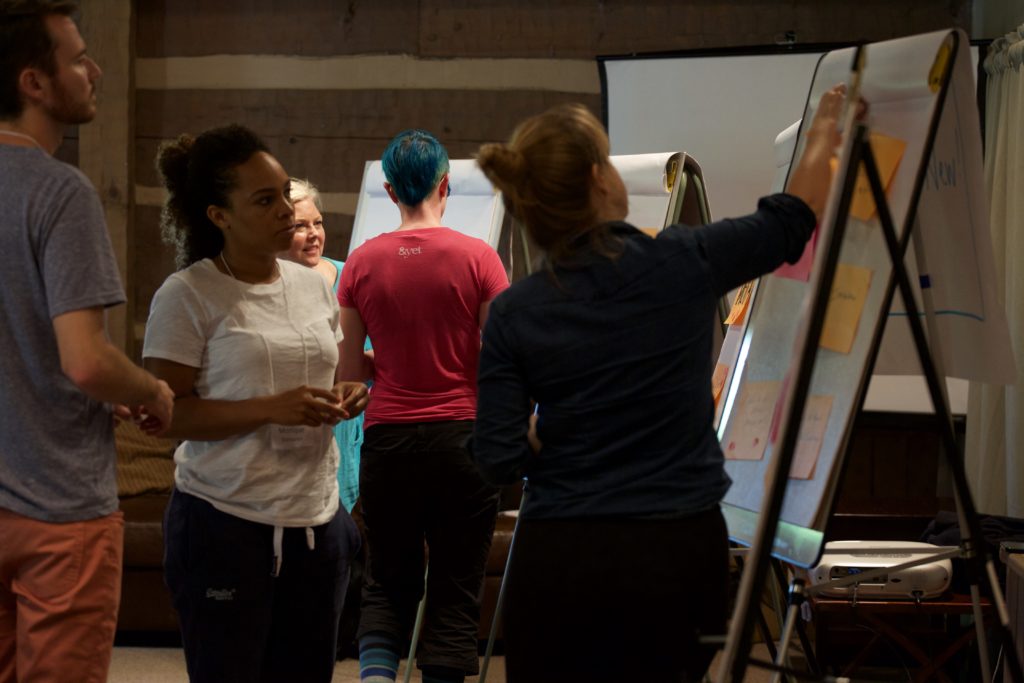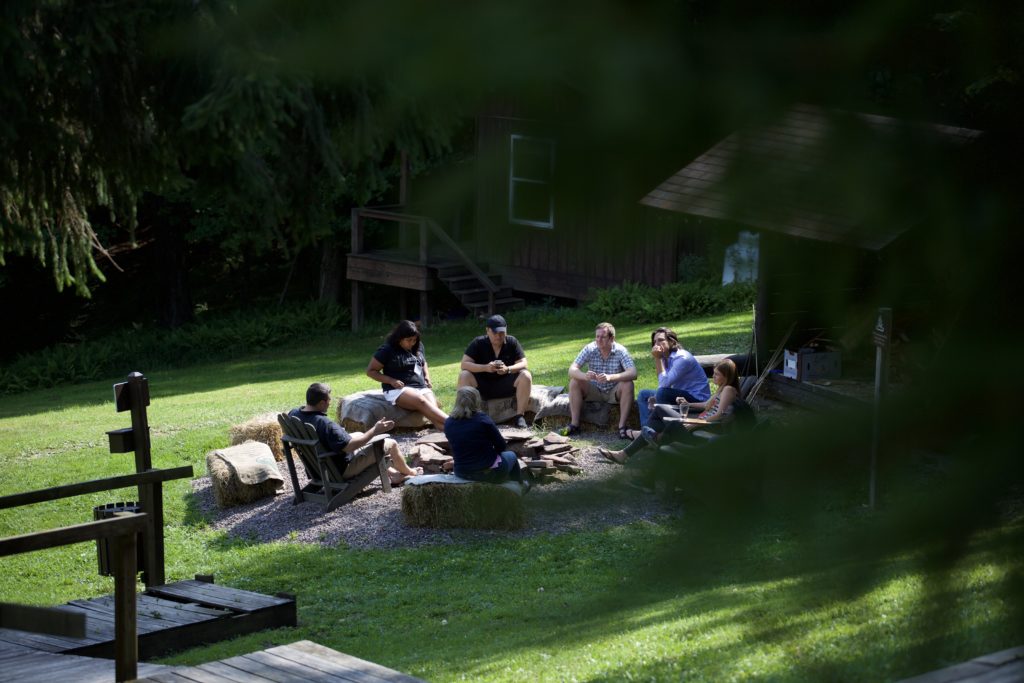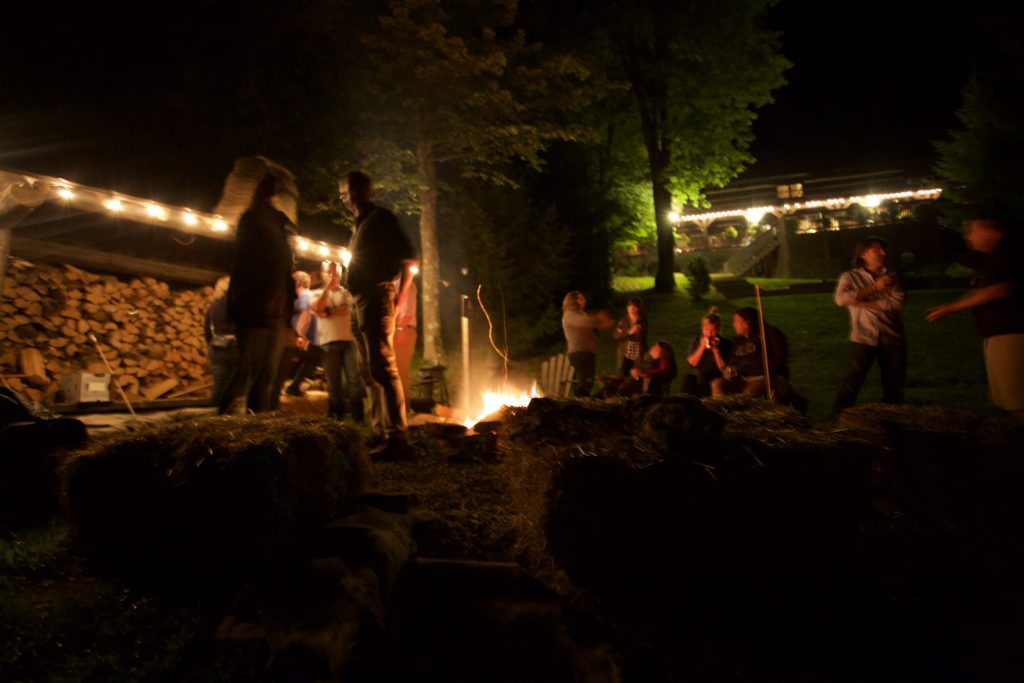Originally posted on the Truss blog
All hands meetings are important – they are a way to spread a message, a way for a team to get to know each other, and a way to move a decision making process forward. They are easy to do wrong—to hear something everyone already knows a thousand times over, to be unclear, or to be a jumbled mess without enough time to accomplish a goal. I’ve run the numbers of how much we pay for an all hands meeting (something I can do with internal salary transparency), and the cost is nothing to laugh at. So why do we have these meetings so often (at Truss, once a week), and how can we make sure we’re getting the most of them?
We see facilitation as the way to get the most out of a meeting like this. I’ll arbitrarily define “meeting facilitation” here as the act of deciding what you want to get out of a gathering, planning for, and then constructing and maintaining a space and flow to optimize for achieving that goal with a group of people. This is different from presentations—which are also useful—as a presentation is about the clear delivering of a message by one or a small group of people to another set of people. It is possible to facilitate a set of presentations, especially if there is Q&A at the end.
Facilitating distributed meetings
As we’ve talked about before, facilitation changes when you have a distributed group. And so as Truss noses up past 70 (and still growing) we’re hitting new facilitation challenges. As our client base grows, and our internal operations change, and fewer Trussels know each other well, what do we want out of our all hands meetings (that we call “Practitioners’,” or “Prac” for short), and how can we be sure we’re achieving those goals?
Skill share
We know we don’t have all the answers at Truss, and so we wanted to have the conversation about how to further improve our practices with a broader group of people. Four Trussels (Sara, MacRae, Isaac, and Willow) were joined by Emily of honeycomb.io, Pam of One Medical, Aaron of CivicActions, Liz of Public Lab, and Mike of an undisclosed media company to skill share. The all hands we facilitate run from groups of a handful to in the 70s. Some of us rotate facilitators, some of us hold that honor for a prolonged period. Some of us are fully remote, some of us are clumped into rooms in different locations.
While you can get into the details by watching the video or reading the notes, our main categories of interest fell into engagement & participation, meeting purpose, and who is remote versus who is in person. We had a few main takeaways that we’ll be cross-pollinating across our organizations.
Facilitation Guild
Having a group of similarly dedicated folk within your organization can help up everyone’s game. Try out experiments together, lean on each other for support, and perform course corrections by having allies to check in with. We try out new things on our project teams and then share them back to the guild, helping the whole organization benefit from gains (and avoid and/or reproduce discovered failures!)
Collaborative decision making
While some of us (including Truss) still use all hands primarily as a way to disseminate information, Aaron of CivicActions and Liz of Public Lab told stories of making decisions as organizations during all hands meetings. This makes my robot heart sing with joy, and the Truss facilitation guild will be looking for ways to start doing this in our projects.
“Hand” in chat
As a group grows larger, it becomes more difficult to track who wants to say something, and in what order. We use the video conferencing software’s chat to raise a hand through text—literally typing “hand”—in order to signal we want to say something. Not only does it help the facilitator keep stack, it also gives time to folks who want to consider what they want to say before they say it
Banter / Side channel
Banter is a great way to keep everyone engaged—I may not want to take up everyone’s attention with the perfect gif in reaction to something that’s just been said, but if I have somewhere to post it, I’m more likely to stay engaged as are the folk looking at and responding to the gif. Using a side channel (so not distracting from the “hand” channel above) means everyone wins.
What’s next?
Huge shout out to all the folk who joined for this facilitation skill share—I’m excited about a lot I get to do, and this was still the highlight of my month thus far. To be able to share skills across organizations is rarer than I’d like in the private sector, and that’s just silly. We all do better when we all do better. I hope we have more reason to collaborate with each other to grow and uplift the spaces we’re in. Is there something you want to learn or share about?
There is a growing body of work around working from home and working from anywhere… as well as the practices individuals take to stay sane and healthy while doing so. But we’re lacking a supporting body of work in how to help groups work together well in this new distributed environment. Truss is beginning to codify our learnings into a distributed playbook, which we’ll share when it’s good enough to face the tumult of the internet. When it’s out, we hope you’ll join us in making it better.



 22 people – Republicans, Libertarians, Democrats, and one Anarchist (hey that’s me!) – gathered over three days to bond, to engage in facilitated civil discourse, and to learn to see each other as humans.
22 people – Republicans, Libertarians, Democrats, and one Anarchist (hey that’s me!) – gathered over three days to bond, to engage in facilitated civil discourse, and to learn to see each other as humans. We even agreed about what “what if it all goes wrong?” might look like – our leaders becoming more radical, a continued shift in the
We even agreed about what “what if it all goes wrong?” might look like – our leaders becoming more radical, a continued shift in the  But here’s what I walked away with: a new knowledge that my new conservative friends have been fighting for the same thing I’ve been fighting for as an anarchist in crisis response – getting more decision-making power into the hands of local populations. That although I align more with the rhetoric of liberals and radicals… the people doing the work within government to actually devolve power are those I never considered myself to be aligned with. I still think there are more responsible ways to care take the newest and most vulnerable in that process, but now I know I have some loyal antagonists with whom to debate the best path forward.
But here’s what I walked away with: a new knowledge that my new conservative friends have been fighting for the same thing I’ve been fighting for as an anarchist in crisis response – getting more decision-making power into the hands of local populations. That although I align more with the rhetoric of liberals and radicals… the people doing the work within government to actually devolve power are those I never considered myself to be aligned with. I still think there are more responsible ways to care take the newest and most vulnerable in that process, but now I know I have some loyal antagonists with whom to debate the best path forward.